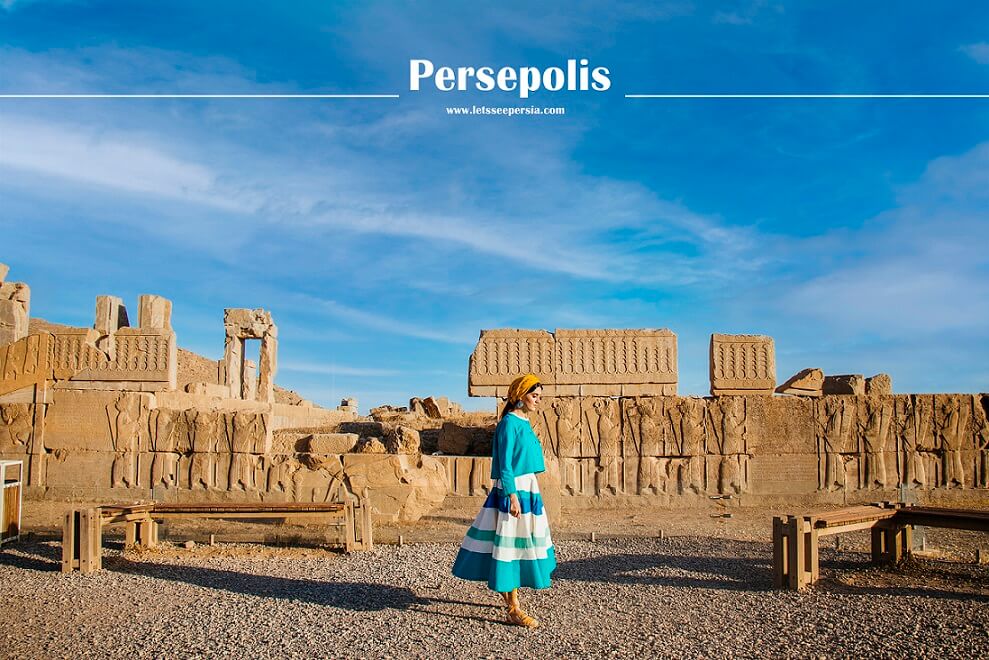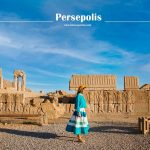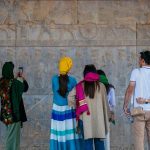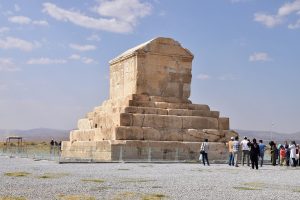Persepolis or Takht-e Jamshid
The Persepolis is one of the main Shiraz attractions. The ancient historical place. Here, you can find all things to know about Persepolis, like address, photos, tourist information, nearby main attractions, and Iran tours that include this attraction.

Persepolis in Shiraz + address & photos
- Theme: Historical and Cultural
- Address: Marvdasht,Fars Province
- UNESCO Site Id: 114
- Opening Hours: 09:00 - 17:30
- Recommended Time to Spend: 2 hours
Tourist information about Persepolis
Persepolis is a must-see place in Shiraz. It was the ancient Achaemenid Empire’s ceremonial capital approximately 2500 years ago. No journey to Shiraz-city tour is complete without seeing Persepolis, one of the most significant ancient monuments. It is 57 km from Shiraz and 10 km from Marvdasht.
Let‘s read the attractive tale of This attraction and its importance in ancient Persian culture. Also, you’ll be provided some tips for visiting this remarkable site in Shiraz.
The architecture of Takht-e Jamshid is studied as one of the most important ceremonial centers in the ancient world. The city was built and expanded by Achaemenid kings. It was their capital and the official residence of their kings until it was destroyed by Alexander in 330 B.C.
The spectacular remains take a few hours to visit; bring lots of water because the midday sun can be brutal.
Visit this place as often as possible; if you want my advice, don’t skip it.
History of Persepolis
Persepolis is an ancient attraction that is recorded as a UNESCO heritage site. It stands as a testament to the grandness and power of the Achaemenid Empire, which ruled over a vast territory from 550 to 330 BCE.
It was founded by Darius the Great and later expanded by his successors, including Xerxes I and Artaxerxes I. The city served as the formal capital, where the kings received tribute from the various nations under their authority.
Takht-e Jamshid was constructed over several decades, beginning in 518 BCE. Its purpose was to showcase the wealth and cultural diversity of the Achaemenid Empire. The city was adorned with magnificent palaces, temples, and other structures, all built with careful attention to detail.
The architects and artisans employed a unique blend of Persian. All that hard work resulted in a distinctive architectural style that still captivates visitors today.
Architecture of Persepolis
The architecture of Persepolis has been an inspiring model for many buildings. It reflected the dignity and power of the Achaemenid Empire. The city was strategically positioned on a raised platform, which would allow the king to have a better view of the surrounding landscape.
The main entrance to the city was through the Gate of All Nations, an imposing structure decorated with intricate reliefs representing the various nations under Persian rule. Indeed, it was magic that we would love to see.
You’ll be amazed by the design of Persepolis as you’ve never seen anything like this before. The heart of Persepolis is the Apadana, a grand audience hall where the kings received tributes from the representatives of the empire. The hall is supported by massive columns, each intricately carved with images of mythical creatures and royal guards.
The walls of the Apadana are full of scenes of conquered nations bringing gifts to the Persian king. Persepolis played a crucial role in ancient Persian culture, serving as a symbol of the empire’s wealth, power, and religious beliefs.
Destruction and Rediscovery of Persepolis
Tragically, Persepolis was sacked and burned by Alexander the Great in 330 BCE. The city lay in ruins for centuries, buried under layers of sand and debris. It was in the 17th century that European travelers rediscovered the ruins of Persepolis.
Since then, great efforts have been made to rediscover and keep the site, revealing the majesty of this ancient city to the world once again.
Visiting This attraction today is like stepping back in time. As you walk through the vast ruins, you can’t help but admire the architectural wonders that have seen so many historical battles and events.
One of the most impressive features of Persepolis is the detailed reliefs carved into the walls of the buildings. These reliefs describe a wide range of subjects, from mythical creatures and royal processions to scenes of everyday life in ancient Persia. They provide a glimpse into the cultural, social, and artistic achievements of the Achaemenid Empire.
Must-See Places in Persepolis
While exploring Persepolis, be sure not to miss some of its must-see places. The Apadana Palace, which has impressive columns and reliefs, is a highlight of any visit. The Hall of Hundred Columns, with its complicated carvings and massive stone columns, is another must-see. Don’t forget to explore the Royal Tombs, where the remains of ancient Persian kings were laid to rest.
Persepolis' Reputation in the World
The grandness and mystery of this attraction have captured the imagination of artists, writers, and filmmakers throughout history. The city has been depicted in various works of literature and has served as a backdrop for numerous films and documentaries.
Its rich history and architectural beauty continue to inspire and intrigue people from all walks of life. Many of the best artists and tourists all over the world didn’t miss this chance to see the history itself with their own eyes and the majesty of Takht-e Jamshid.
Tips for visiting Persepolis
- If you’re planning a visit to Persepolis and the city of Shiraz, here are some tips to make it an unforgettable experience:
- Plan your visit during spring or autumn when the weather is pleasant and the crowds are smaller.
- The spectacular remains take a few hours to visit; bring lots of water because the midday sun can be brutal.
- Wear comfortable shoes and bring sunscreen and a hat, as there is a lot of walking and minimal shade.
- Engage a knowledgeable local guide who can provide insights into the history and significance of Persepolis, or book your Persepolis Tour with Let’s See Persia and leave the rest to our expert tour leaders.
- Take your time to explore the ruins and soak in the atmosphere of this ancient city.
- Don’t forget to explore Shiraz City itself, which is known for its beautiful gardens, stunning mosques, and vibrant bazaars. If you have a plan for Shiraz itself, check out our Iran Tour Packages.

You can add this attraction to your itinerary. Please get in touch with tour operators.
- info@letsseepersia.com
- Nearby Location
- The Persepolis to Naqsh-e Rostam . 12 min. by car.
- The Persepolis to Pasargadae. 1 hr 24 min. by car.
- The Persepolis to Tomb of Hafez. 55 min. by car.
- The Persepolis to Vakil Mosque. 1 hr 19 min. by car.
- The Persepolis to Shiraz International Airport. 1 hr 18 min. by car.
List of Iran tours includes Persepolis
Iran Monthly Group Tours








